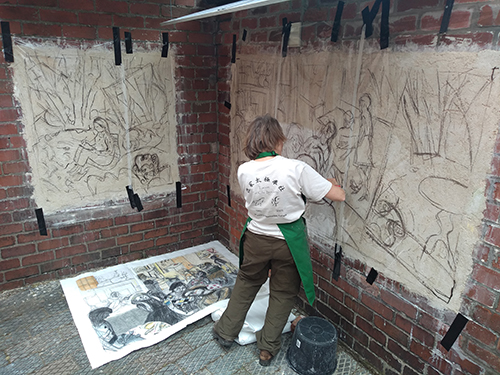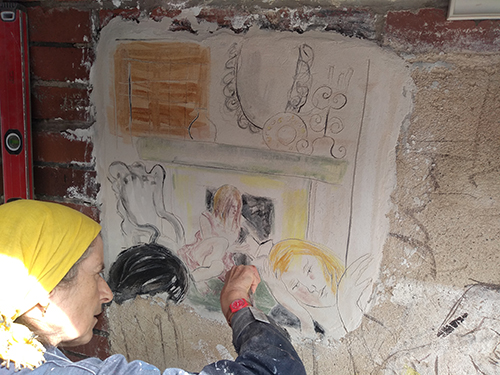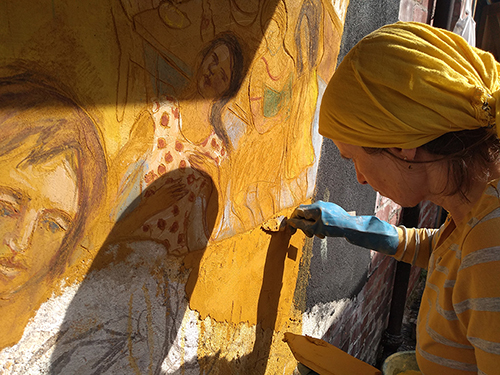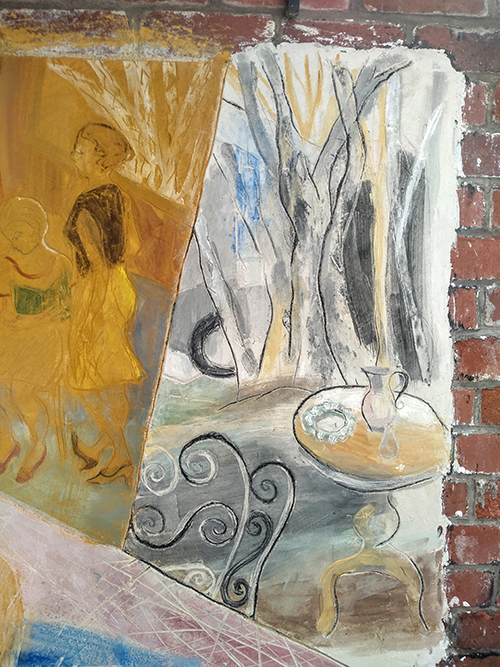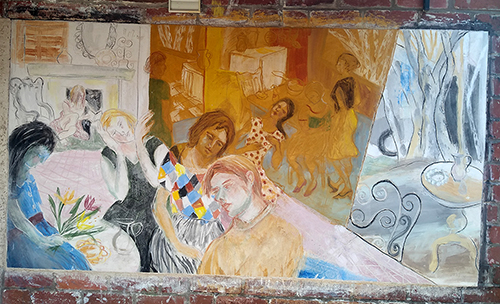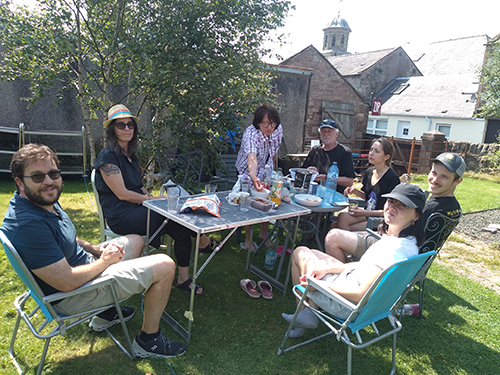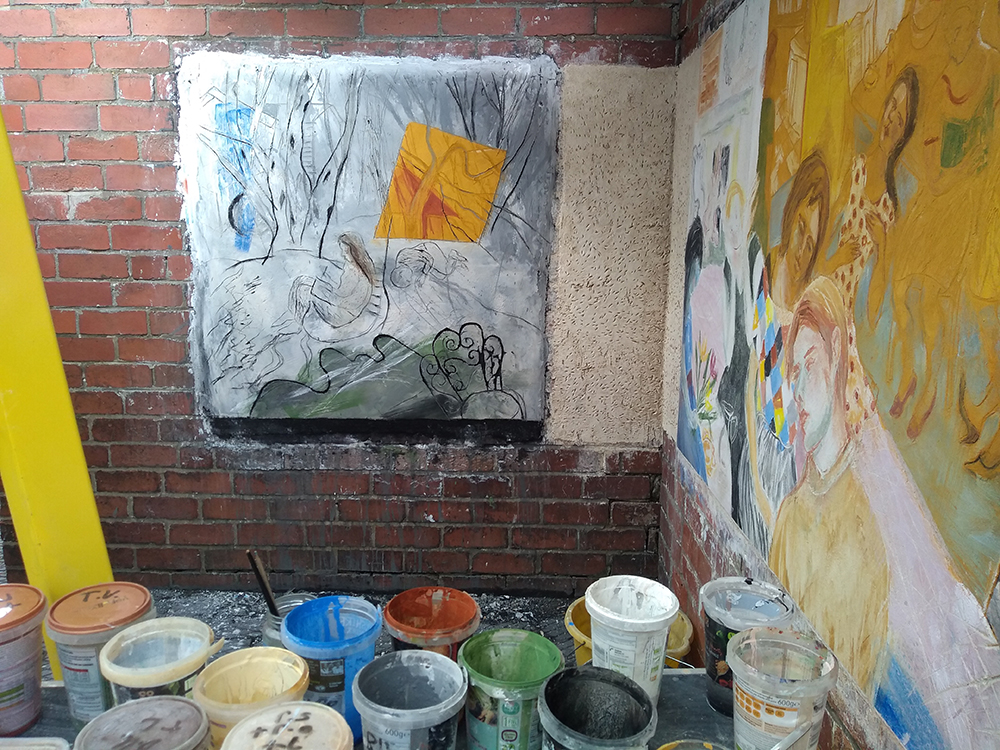
In 2022, I received a QEST Anthony and Elizabeth Mellows Charitable Settlement Trust Award to gain further training in fresco painting. The first part of this, in June, involved working on a wall. I was keen to get practice in this as I had previously mainly worked on small portable panels. I asked Isabelle Bonzom, artist, fresco expert and author to mentor me. Initially, this was conducted through zoom sessions with Isabelle at her home in Paris and me at Merz Gallery Sanquhar in front of a large brick wall. Many thanks to Dave Rushton for allowing me to be set loose in his courtyard!
Isabelle instructed me in the mixing of lime putty with sand and its application onto the wall. I had previously had a go at this for my fresco at West Park Place, Edinburgh but, without guidance, that was with a very haphazard technique which left me feeling that I had been in a fight. The proper use of the trowel and float was demonstrated to me and, I must say, it didn’t hurt at all, even though it was very physical and tiring. It was quite strange having my laptop on a plinth and the lime mortar in a trough – a real combination of technology and hands-on. After two days, I had laid three square metres of roughcast onto the brick wall and had to wait several weeks for this to dry.
I had various further zoom sessions with Isabelle to discuss my ideas and to gain further knowledge on the art of fresco and its history. I painted several large scale watercolours in my studio in preparation.
Continuing with the QEST Scholarship, Isabelle came over to Scotland in July. After a day in my studio looking over ideas, we travelled to Sanquhar with the car full of lime, sand, tools and rolls of paper. In discussion with Isabelle, I decided to base my fresco on two charcoal collages I had made on my residency in Merz in 2020. One of these was of figures in an interior and the other was of the trees around the Merz site. Isabelle is keen to encourage artists to express themselves and be true to their own vision, adapting their ideas to the medium of fresco. Collage is ideal for fresco because we have to work in daily sections – giornati – and I exploited this. It is also true to the spirit of Merz and the legacy of Kurt Schwitters.
I did the fresco in seven giornati, some days working for twelve hours. Three of the giornati were painted on a natural lime coat over a black mortar so that I could engrave into it, thus responding to the charcoal lines in my collage, two of the giornati (one just a small patch)were painted onto a yellow ochre lime coat and the other onto a natural one. It was good to try all these different approaches and Isabelle was always there to encourage me if I felt stuck. It can be a scary thing putting pigment onto the damp lime coat, but I gained in confidence as the week went by and became quite bold. I still have to do the corner section uniting the two walls, but this will have to wait.
There were several other artists and a writer doing residencies at Merz at this time and there was a real feeling of an artist community with discussions and some meals together. I also had the opportunity to practise French with Isabelle in preparation for her course, L’Art de la Fresque, which I attended in September – blog to follow.
